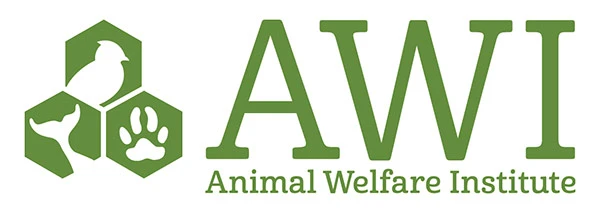
The Self-Sufficient Home: Real Estate Meets the Survivalist Movement
Rising Interest in Self-Sufficiency
In recent years, there's been a notable surge of interest in self-sufficiency and sustainable living. People are looking for ways to reduce their reliance on external resources and become more self-reliant. This movement isn't limited to remote cabins in the woods; it's increasingly making its way into urban and suburban areas.
The Intersection of Real Estate and Self-Sufficiency
This trend intersects with the real estate market in fascinating ways. Homebuyers are now seeking properties that offer features like solar power, rainwater collection, and space for gardening. They want homes that can sustain them through unexpected challenges, whether it's a power outage or disruptions in the supply chain.
The Appeal of Sustainable Living
Sustainable living isn't just about preparing for doomsday scenarios. It's also about reducing your environmental footprint and living a more mindful, eco-friendly life. Properties that support self-sufficiency are appealing to those who want to live in harmony with nature and take control of their resources.
Key Features of Self-Sufficient Homes
Solar Power Generation
One of the fundamental features of self-sufficient homes is solar power generation. Solar panels on the roof or in the yard harness the energy of the sun, converting it into electricity to power the home. Excess energy can be stored in batteries for use during cloudy days or power outages. This not only reduces electricity bills but also contributes to a smaller carbon footprint.
Rainwater Harvesting
Another critical aspect of self-sufficiency is rainwater harvesting. Homes are equipped with systems that collect rainwater from roofs and store it in tanks. This harvested rainwater can then be used for various purposes, including irrigation, flushing toilets, and even for drinking after proper filtration. It's a sustainable way to reduce reliance on municipal water sources.
Food Production
Self-sufficient homes often have space for food production, whether it's a vegetable garden, fruit trees, or even aquaponics systems. Growing your food not only provides fresh, organic produce but also reduces the need to rely on external sources for groceries. It's a step toward greater food security.
Off-Grid Capabilities
Some self-sufficient homes are designed to be entirely off-grid, meaning they can function independently of traditional utilities like electricity and water supply. With solar panels, rainwater harvesting, and efficient waste management, these homes can thrive without being connected to external services.
Challenges and Solutions in Self-Sufficient Homes
Initial Investment Costs
One of the primary challenges in embracing self-sufficiency is the upfront cost. Installing solar panels, rainwater harvesting systems, and other self-sufficiency features can be a significant investment. However, it's important to view this as a long-term investment that can lead to substantial savings on utility bills over time.
Maintenance and Expertise
Self-sufficient systems require regular maintenance and occasional repairs. Solar panels may need cleaning or maintenance, rainwater harvesting systems can clog, and gardens require care. Homeowners need to be willing to invest time and effort into maintaining these systems or budget for professional services.
Local Regulations and Zoning Laws
Depending on the location, there may be regulations and zoning laws that restrict certain self-sufficiency features. For example, there might be limitations on the size of solar panels or rainwater tanks. It's crucial for prospective buyers to research local regulations and ensure their plans align with the law.
Education and Skill Building
Becoming self-sufficient often requires learning new skills, from gardening to basic maintenance of systems. Buyers need to be open to acquiring these skills or have access to resources and professionals who can help.
Resilience to Environmental Factors
Self-sufficient homes should be designed to withstand environmental challenges. For example, in areas prone to drought, rainwater harvesting systems need to be extra efficient. In regions with extreme weather, solar panels should be robust. Smart design and technology can mitigate these challenges.
Market Trends and Future Growth
Buyer Demand for Sustainable Living
The appeal of self-sufficient homes goes beyond the survivalist mindset. Many buyers are drawn to these properties because they align with their desire for a more sustainable lifestyle. The ability to generate clean energy, conserve water, and grow your food resonates with those who want to reduce their environmental impact.
Global Impact and Potential for Mainstream Adoption
While self-sufficient homes are still a niche market, they have the potential for mainstream adoption. As climate change and resource scarcity become more pressing concerns, sustainable living practices are gaining traction. Governments and municipalities are promoting self-sufficiency through incentives, making it more accessible for a broader audience.
Changing Buyer Preferences
Buyers' preferences are evolving. They're not only looking for homes that provide shelter but also for properties that enable them to live more independently and sustainably. This shift in preferences is pushing the real estate market to adapt and offer more self-sufficient options.
Technological Advances
As technology continues to advance, self-sufficient homes are becoming more efficient and cost-effective. Innovations in solar power, rainwater harvesting, and sustainable building materials are making self-sufficiency more achievable and attractive to buyers.
In Summary
The self-sufficient home represents more than just a trend; it's a reflection of changing priorities and values in the real estate market. Buyers are increasingly seeking properties that allow them to reduce their environmental footprint, gain more control over their resources, and live sustainably.
Key features of self-sufficient homes, such as solar power generation, rainwater harvesting, and space for food production, align with these values and offer practical benefits, including reduced utility costs and increased resilience.
However, embracing self-sufficiency isn't without its challenges, from initial investment costs to ongoing maintenance and adapting to local regulations. Yet, as the demand for sustainable living grows, the real estate market is adapting to offer more self-sufficient options.
The future of self-sufficient homes is promising. As technology advances and governments incentivize sustainable practices, self-sufficiency may become a more mainstream and accessible way of life for homeowners. Whether motivated by sustainability, preparedness, or a desire for independence, the self-sufficient home is poised to play a more prominent role in the real estate landscape.
WE OFFER OVER
25+
PROGRAMS
WE HAVE SERVED
12000+
STUDENTS
VETERAN STAFF
40+ Years
INDUSTRY EXPERIENCE
PROUDLY PROVIDING
23+ Years
OF EDUCATION
INLAND REAL ESTATE SCHOOL, INC. SUPPORTS

Campus Visiting Hours by appointment only:
1st-18th each month AM times, M-F
19th-end of the month PM times, M-F
Visiting hours need to be scheduled in advance
Not affiliated with The Inland Real Estate Group of Companies, Inc. and “The “Inland” name is a registered trademark being used under license”
OAK BROOK, ILLINOIS 60523. © INLAND REAL ESTATE SCHOOL, INC. A PROFESSIONAL LEARNING INSTITUTE, INC. COMPANY, 2010. ALL RIGHTS RESERVED.
NOT AFFILIATED WITH THE INLAND REAL ESTATE GROUP OF COMPANIES, INC. THE INLAND NAME IS USED UNDER LICENSE. Privacy Policy







